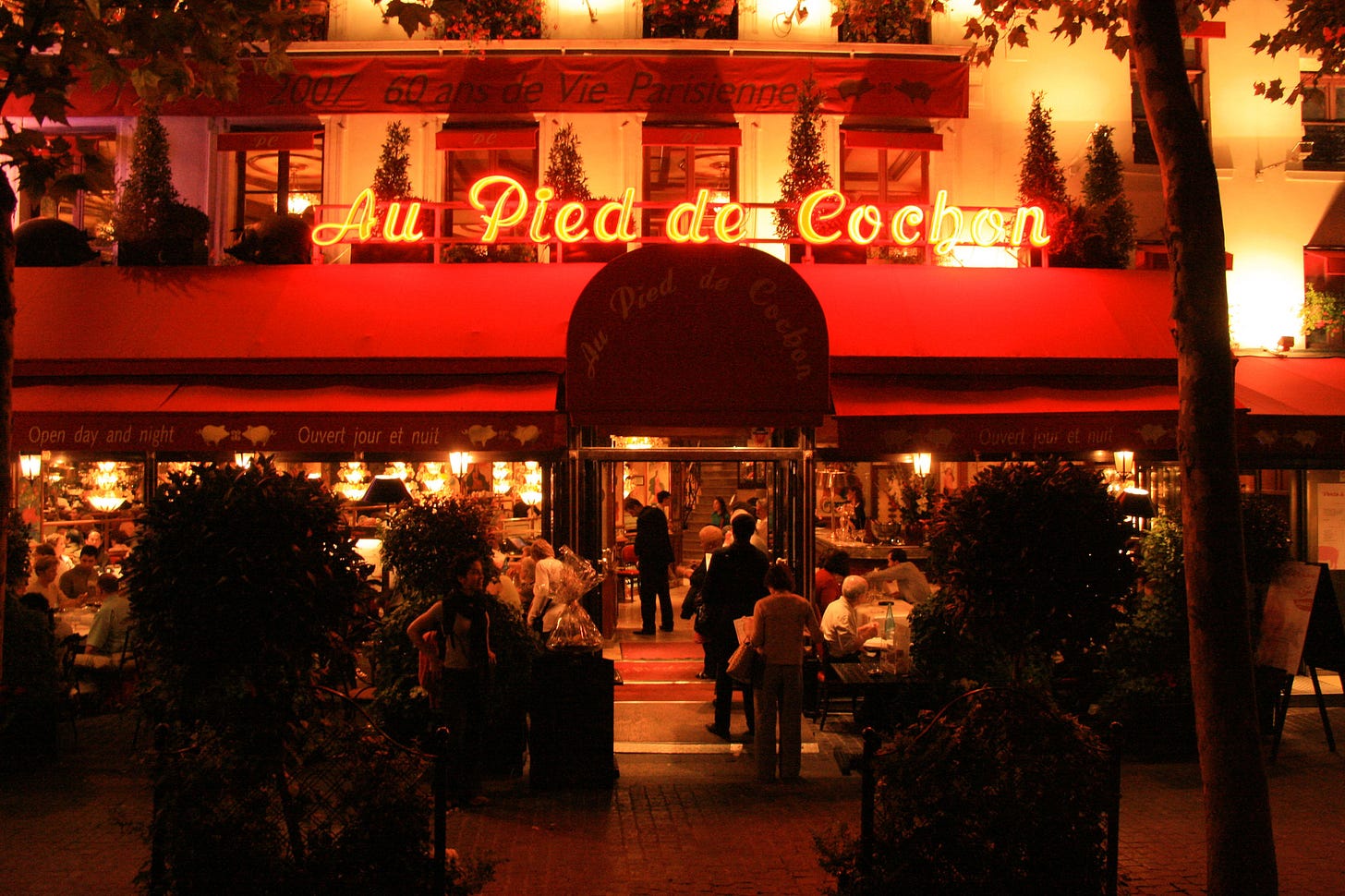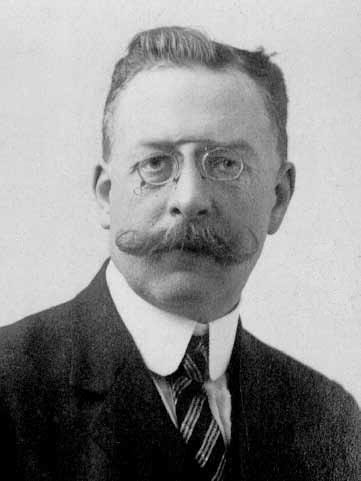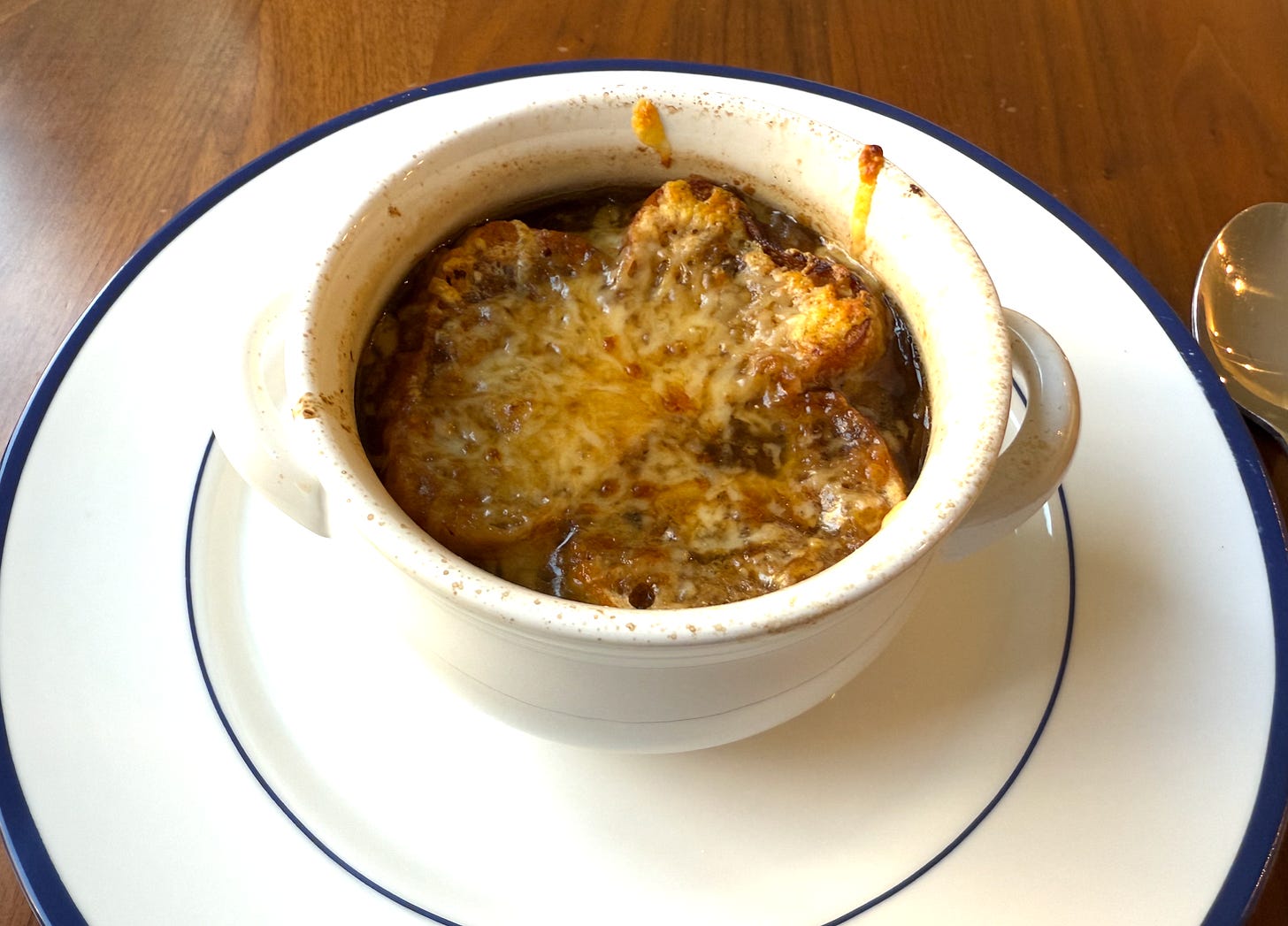The Double Life of The Most Delicious Soup In The World
French onion soup defies stereotypes of high and low cuisine, but it doesn't matter because it tastes so good. And that's because of chemistry.
I grew up in a musical household. My mom was an aspiring folk guitarist, and when I became a teenager, I wanted to be a folkie too. And in those days, the place to go for folk music was a place called Drowsy Maggie’s Coffee House and Restaurant in San Diego. The place was created in the spirit of the folk coffee houses of the 1950s and 1960s, hosting “hootenannies”, jazz trios, bluegrass jams, and folk singers of all kinds. They had a big, loud espresso machine, a bunch of small tables, and an open microphone. I have a bunch of fond memories of the place, but the thing I remember best was the French onion soup.
I know, seems odd; a bohemian coffee house serving onion soup? But hear me out- French onion soup had by that time already been a part of late night café culture for several generations. Here’s the story.
Soup made of onions probably goes all the way back to the civilizations of the bronze age, since onions are a remarkably easy vegetable to gather or grow. And, as agriculture spread westward to Europe, a soup made of leftover cow bones and home-grown onions was the ultimate in thrift cuisine. And so, onion soup caught on in France. The French being the culinary obsessives they are, onion soup in France became better and better. Over the centuries, it was perfected in the Gallic countryside, becoming a cherished comfort food. The dish migrated to Paris, and found a place as a popular, relatively inexpensive restaurant meal for those who wanted to eat out on a budget. By the late 1800s, the soup had achieved its ultimate form, soupe a l’oignon gratinée: long-cooked caramelized onions in a deep-brown beef stock topped with French bread croutons and grated cheese, set under the broiler until browned and bubbly. This was the onion soup that was exported abroad in 1861 and, by the 1930s, had become a craze in London, when P.G. Wodehouse wrote this bit of dialogue:
“….what is an onion soup bar?”
“A place where you sell onion soup”, explained Pongo. “There are lots of them around Picadilly Circus these days. You stay open all night and sell onion soup to the multitude as they reel out from the bottle-party places. Pots of money in it, I believe.”
By the midcentury, onion soup was firmly associated with the late night culture of the Paris bon vivant. It became especially famous at the restaurant Au Pied de Cochon which, in 1947, became the first restaurant in France to be allowed to stay open 24 hours a day. The restaurant hasn’t closed its doors since, and has become one of the most legendary restaurants in Paris. And soupe a l’oignon gratinée is the only dish which has always been on the menu.
At this point, “French” onion soup, as it was known in the United States, started living something of a double life. It was on the menu at elegant French restaurants, and nearly every French chef had a signature recipe for the soup. But, because of its association with the bohemian nightlife of Paris and London, it also became a choice menu item for the cafés of the American beatnik and hipster set which flourished in urban neighborhoods like New York’s West side. Though onion soup was perfected by the skilled chefs of Paris, it is essentially a peasant dish: based on bones, trimmings, and inexpensive vegetables, it is one of the cheapest French dishes you can make. The aspiring, penniless American artiste loved the romance of the Paris café, but French cuisine was also an important class signifier of the American monied elite. So, by 1960, you could get onion soup au gratin at both a glamorous chandeliered midtown French restaurant or a dingy, smoky hipster café in Greenwich village. And, as folk music and beat poetry brought bohemianism to the baby-boomer youth of the American 1960s, French onion soup came right along with it. And that’s how it got to my beloved Drowsy Maggie’s in San Diego.
Sadly, it’s harder to find French Onion Soup on menus these days, I suppose because both French Bistros and Bohemian Cafés have gone out of style, replaced by hip sushi bars and Michelin-star elegance. But I consider soupe a l’oignon gratinée to be one of the five best dishes in history. I mean it. I love it so much. It is one of the most delicious food experiences possible.
The reason onion soup tastes so good is another French word: and that word is Maillard. Named after chemist Louis Camille Maillard (may-yard), who discovered it while investigating proteins, the Maillard reaction is responsible for browning in many of our favorite foods. That brown sear on a steak? Maillard reaction. That delicious, fragrant smell of toasted bread? Maillard reaction. The compelling flavor of coffee? Chocolate? Soy sauce? Roast chicken? You get the picture. The Maillard reaction is sometimes called the most popular chemical reaction on earth, due to its extremely common use in cooking. Maillard reactions happen when sugars and amino acids are heated together, and the combination creates deep brown, incredibly aromatic and mouthwatering flavors.
There’s much more to write about Maillard reactions, but for now you should know that making French onion soup means layering multiple sources of Maillard flavors together in a single dish. The roasted beef bones used to make the stock, the mahogany-colored caramelized onions, the toasted croutons, and the broiled cheese are all sources of Maillard flavors. Put together, you get a Maillard bomb, which, combined with the salty, umami tastes of the ingredients make a perfectly mouthwatering and thoroughly satisfying experience. And, to make matters even better, it’s really, really easy and inexpensive to make. Here’s how I do it:
Get a few pounds of beef bones, I use neck bones but any bones will do, just make sure they have a fair bit of meat still on them. You can ask any butcher for bones, they will sell them to you for cheap. If they have no meat on them, add a bit of chuck or inexpensive beef scraps. I throw any beef trimmings I have in here. Also throw in a couple carrots and celery stalks chopped coarse.
Roast the bones and vegetables in a 400 degree oven for about 30-40 minutes, turning once, until well browned but not black. Remove everything from the oven and place it in a stockpot (I use an Instant pot for this) along with a couple of bay leaves, peppercorns, and some thyme. Deglaze the roasting pan with water or wine (this is important!! The brown bits in the pan are the best part!!) and add to the pot. Cover the bones and vegetables with water, and cook at a very low simmer (no bubbles breaking the surface) for from 3-5 hours (or on the soup setting of the pressure cooker for 1-2 hours). Strain the broth and skim any fat, and there you have beautiful, deep brown beef stock. Set aside.
Now, get 3-4 yellow onions, and slice them thin lengthwise, top to bottom. You’ll wind up with what will seem like a huge pile of julienned onions. Put them in a wide lidded frying pan with a knob of butter, a pinch of salt and a glug of water. Cook the onions over medium heat with the lid on until they are wilted and soft. Now, remove the lid and continue to cook the onions over medium-high heat, stirring frequently so they brown evenly. You can add a teeny bit of baking soda at this point to speed up the browning, but take your time- patience at this point will be rewarded. Once the onions have reduced and taken on a coffee-brown color, you’re done.
Scrape the onions into a saucepan and deglaze the frying pan with a bit of wine or water, adding that to the saucepan. Put several ladlefuls of the beef stock into the pan along with some pepper and a little salt. (be careful with the salt at this point- it’ll concentrate as the soup cooks). Set it to simmer on the stove as long as you can wait- but you won’t be able to wait very long because it smells really good. When you’re ready to eat, taste and correct the salt and find a few oven-proof bowls.
Into each bowl, ladle some soup and add some pre-toasted slices of baguette. I toast my baguette for 30 minutes at 200 degrees to make it stale and crunchy. Now grate a healthy amount of Gruyère cheese on top. Finally, slip the bowls into an oven set to broil. Watch them carefully, and remove them when the tops are bubbling and brown.
p.s. I’m sorry I didn’t write this recipe like a normal recipe is written (with measurements), but this is literally how I make onion soup. There are lots of great youtube videos on how to make both beef stock and caramelized onions; here’s one from Julia Child. My favorite video about caramelizing onions however is from the great Lan Lam.
p.p.s. Because onion soup is all about Maillard reactions, it’s fair game to add other sources of browning flavors to the soup. My favorite is Chinese dark soy sauce, which is much different than ordinary soy sauce- it’s thicker, darker, less soy-y and a fantastic source of Maillard flavors. I sometimes sneak it into my soups and stews when I want a boost of brown.








When I make Beyond Burgers, they leave those tasty bits in a pan. I’m going to use those in a vegetarian version
Fascinante descripción de un gran gran y apetitoso plato de sopa. Gracias Peter Giuliano